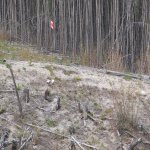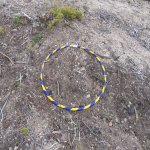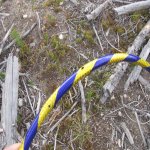Fellows
Was out yesterday and for fun decided to compare methods to measure my group sizes.
Method 1 - SubMoa App. How it works: Take photo of target. Using know distance on the photo (I placed a steel ruler beside the group) indicate the know distance to the app. Indicate bullet on target and the app calculates your group:

Method 2 - Drawing Circle template. How it works: Place template over group. Using found measurement, deduct 5.63mm (I measured a unfired bullet (last photo) to get centre to centre point. In this case my group fit in the 23.812mm circle minus 5.63mm = 18.29 mm group.

Method 3: Digital Micrometer. How it works: Measure group with instrument. Using found measurement, deduct 5.63mm (I measured a unfired bullet (last photo) to get centre to centre point. In this case my group measured 24mm minus 5.63mm = 18.37 mm group.

In summary, the app allows you to have nice graphic and quick calculation on the range but is the least accurate. The circle template is easiest but if you group is between 1/16 to 1/8 inch you may not get a fully accurate reading. The Micrometer is very accurate but you have to be careful when measuring to get the exact edge.
Best bang for the buck - Steadtler Professional Combo Circle. Its also the easiest to use.


Was out yesterday and for fun decided to compare methods to measure my group sizes.
Method 1 - SubMoa App. How it works: Take photo of target. Using know distance on the photo (I placed a steel ruler beside the group) indicate the know distance to the app. Indicate bullet on target and the app calculates your group:

Method 2 - Drawing Circle template. How it works: Place template over group. Using found measurement, deduct 5.63mm (I measured a unfired bullet (last photo) to get centre to centre point. In this case my group fit in the 23.812mm circle minus 5.63mm = 18.29 mm group.

Method 3: Digital Micrometer. How it works: Measure group with instrument. Using found measurement, deduct 5.63mm (I measured a unfired bullet (last photo) to get centre to centre point. In this case my group measured 24mm minus 5.63mm = 18.37 mm group.

In summary, the app allows you to have nice graphic and quick calculation on the range but is the least accurate. The circle template is easiest but if you group is between 1/16 to 1/8 inch you may not get a fully accurate reading. The Micrometer is very accurate but you have to be careful when measuring to get the exact edge.
Best bang for the buck - Steadtler Professional Combo Circle. Its also the easiest to use.



















































































